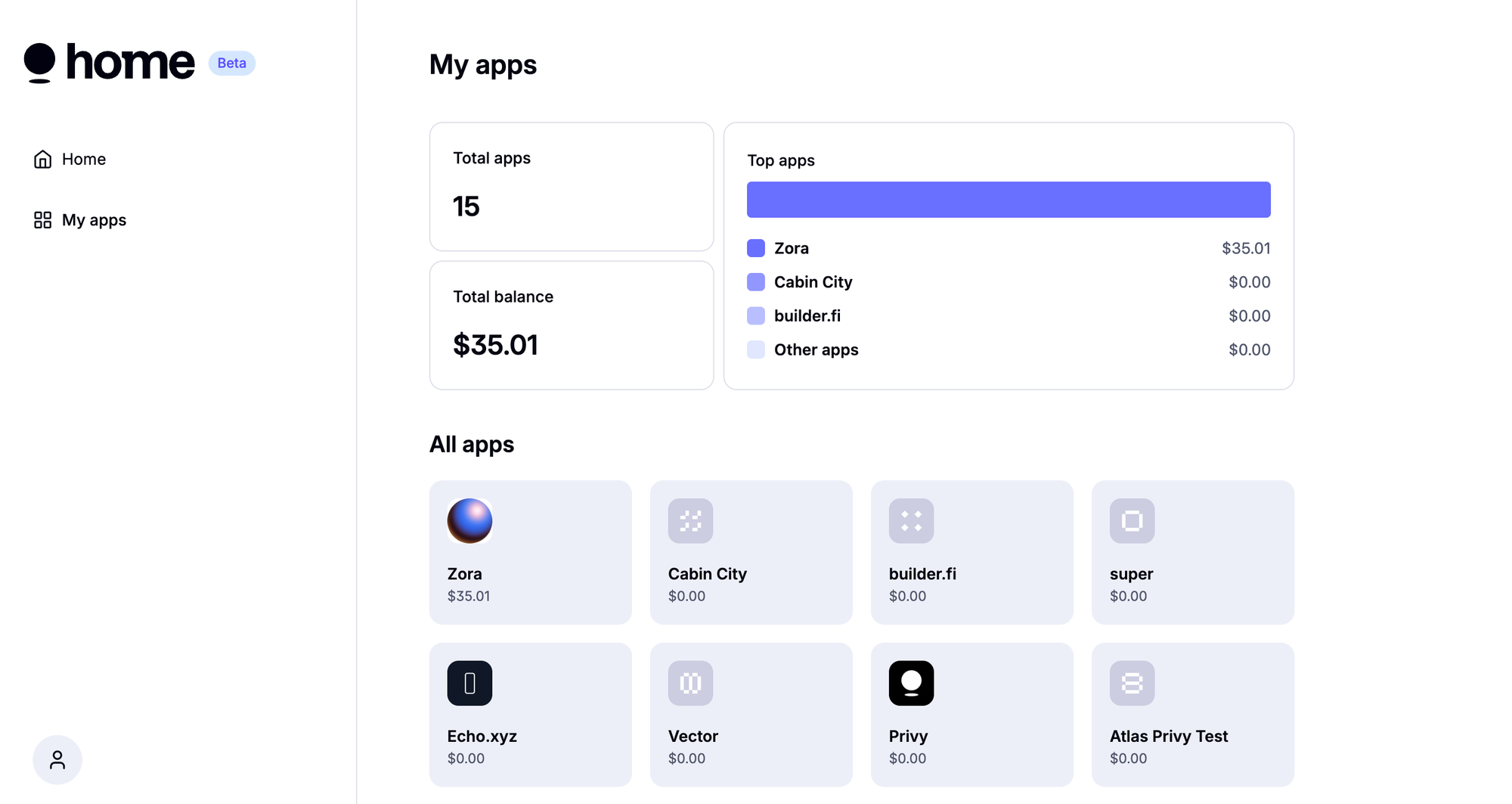Most consumer crypto apps manage user wallets the same way: one user, one address. But as users onboard to more apps, their assets are distributed across multiple wallets, each tied to a different product experience. How do you give users a unified view of everything they own?
Privy encountered this challenge while powering wallet infrastructure for 1,500+ apps. To solve it, Privy built Privy Home, which uses the Zerion API to fetch and normalize wallet data across all chains in a single call—no indexing infrastructure required.
What is Privy?
Privy provides wallet infrastructure that makes it easy to build on crypto.
With Privy, developers can create whitelabel wallets to onboard users with email, socials, or passkeys right inside the app. Creating addresses, signing transactions, and other crypto plumbing is done through a simple API.
Since June 2025, Privy has operated as part of Stripe, powering apps at a massive scale, processing over $9B in monthly transaction volume across 100 million accounts. Today, Privy provides the wallet infrastructure for over 1,500 apps, from trading platforms like Hyperliquid to fintechs like MAJORITY, and marketplaces like OpenSea.
The challenge: getting data across all apps
Privy creates a new wallet for each app a user joins, by design. This approach abstracts away wallet management, delivering the best of both worlds: seamless UX with full security and self-custody.
As Privy-powered apps continued to grow, users began to build rich portfolios across dozens, sometimes hundreds, of wallets linked to the same email. To help users see the full picture, Privy introduced Privy Home: a unified hub for all their wallets.
After logging in with an email, users can view every wallet connected to that identity. To make these portfolios meaningful, however, Privy needed real-time asset data and balances across chains in a single normalized view.

The onchain data problem
How do you fetch balances, positions, and transactions for dozens of addresses across multiple chains—reliably and at scale?
The straightforward approach is to build your own indexers. Spin up RPC nodes for Ethereum, Base, Polygon, Arbitrum, Optimism, Solana, and every other chain your users touch. Write custom parsers for each chain's data formats. Handle edge cases for obscure tokens. Normalize prices. Keep everything in sync.
In practice, this becomes a major operational burden. Teams end up managing blockchain infrastructure instead of focusing on product experience. And if your indexers lag or miss data, users notice.
Privy needed a more efficient and reliable way to deliver onchain visibility, without taking on the overhead of maintaining complex indexing systems.
The solution: Zerion API’s multichain tokens and positions
Privy plugged in the Zerion API to handle portfolio reads at scale.
For each wallet address Privy manages, the app uses Zerion’s multichain tokens and positions endpoints to fetch a complete snapshot of all balances and positions. The data is already normalized (and valued in USD) across EVM and Solana.
One call per address returns the entire portfolio across chains—no nodes, no custom indexers, no manual reconciliations.
At the account layer, Privy simply pipes each of the user’s app-wallet addresses through the same Zerion calls and aggregates the results. This produces a fast, unified “home” view of a user’s onchain journey.
Why Zerion API for this job?
- All chains in one call: Zerion fetches all positions and transactions across 26+ EVM chains.
- Coverage & normalization: A unified schema and consistently normalized data make multi-address aggregation straightforward.
- Latency & scale: Designed for high-scale consumer apps, so portfolio views remain responsive even during traffic spikes.
The impact: users find all their assets
With Zerion API integrated into Privy Home, users see everything they own without juggling multiple tabs. The experience is simple: log in with your email and instantly view:
- Total portfolio value across all wallets
- USD-denominated token balances
- Onchain activity across chains
Privy shipped this feature without building any new blockchain infrastructure.
“We evaluated a few data providers, and teammates kept recommending Zerion. The multichain portfolio call sealed it. It gave us breadth, speed, and clean normalization in one shot.” — Joshua Navi, Software Engineer at Privy
What’s next
This is only the first iteration of Privy Home, and the team has big plans.
- Solana everywhere: Extending Zerion API usage to more Solana-first views, using the same schema and auth flow.
- Simpler key UX: Enhancing key and authorization flows (including passkeys) to keep users secure with minimal friction.
- More app insights: Surfacing complex activity from account abstraction wallets.
Time to build
If you're building a similar "home" view that aggregates data across multiple addresses or chains, Zerion API can help.
The /positions endpoint fetches all token holdings and DeFi positions for any address across 26+ chains. The same handler works for both EVM and Solana addresses, reducing stack complexity.
Get your free dev key and see what you can do with Zerion API.

